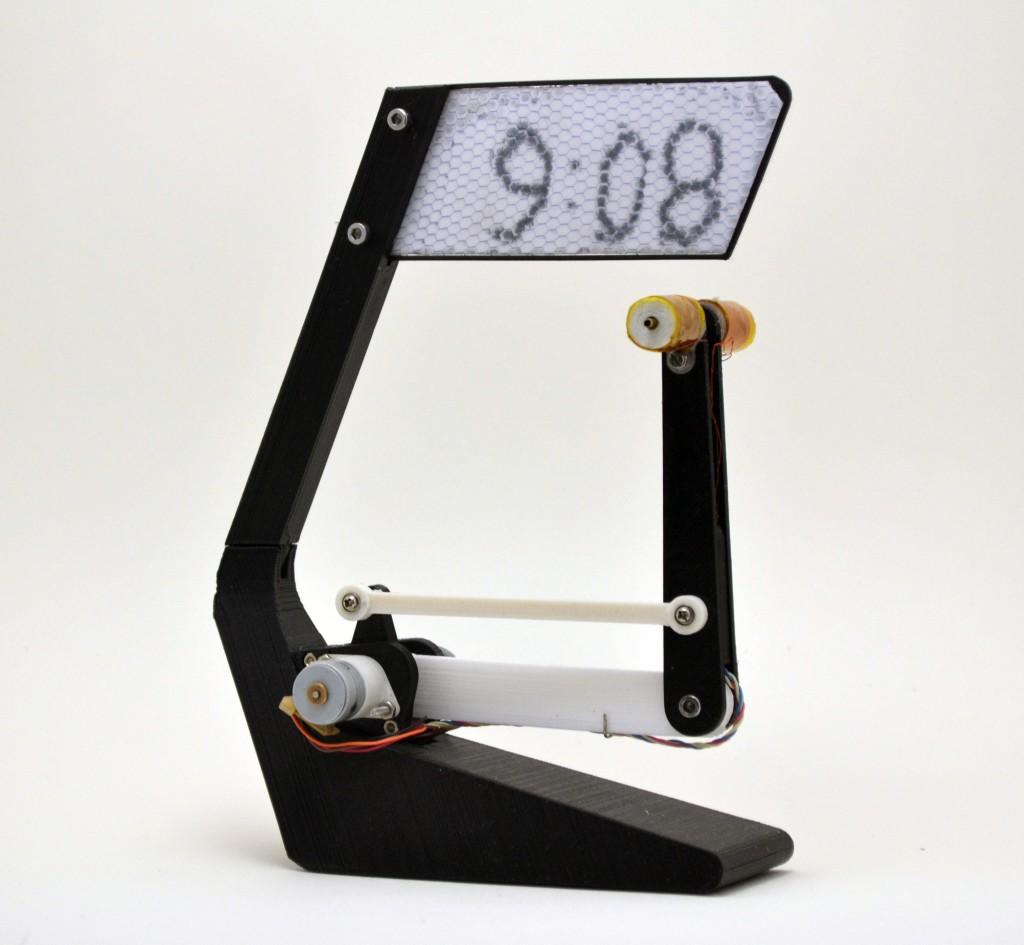On Hackaday three years ago, architect Ekaggrat Singh Kalsi–a designer who also 3D prints with light–shared a robotic writing clock, also referred to as the Doodle Clock, that he has now updated and posted for all interested parties. The biggest improvement is with how time is marked by the clock.
Another general improvement from the first prototype is that the second version has a much smoother and quieter sound since Ekaggrt used small gear steppers instead of servos this time around. All clock parts were designed and 3D printed. In addition to the 3D printed parts, the following components are also required to build this clock yourself: an artmega 644 p; two stepsticks; 1293dd; two 1:100 15mm stepper motors; two 12 x 18 mm solenoids; two 2mm diameter x 10mm magnets; and one ds1307.
This version of the clock has also gone through several prototype phases that Ekaggrat describes in his project log. For the first prototype, one motor was used on the base and one was mounted on the arm’s base driving the upper arm with a thin cable that kept slipping and the motors created backlash. On the second prototype, Ekaggrat replaced the cable with a connecting rod which eliminated the slipping cable problem, but there was still the problem of motor backlash.
Since prototype 2 is where Ekkagratt’s project log on his blog ends, we are left thinking that there’s another prototype to come, however, he doesn’t provide specific details about whether or not he ever tackled that motor backlash problem in the clock.
Other things we do know about the clock is that all parts are 3D printed, with the advice to 3D print with a .25 resolution, 50% infill and be ready up clean up holes before you assemble the clock. In addition to the Hackaday post, Ekaggrat has also posted files on Thingiverse, and quite a few people seem interested in trying this out for themselves. The clock has received 559 views and 64 downloads since it was posted last week.
Still a work in progress, the project has made great improvements and looks like its ready for you to try. As Ekaggart writes himself, the best part of it is “how mesmerizing it is to watch it” which is why he is striving to make it a perfected and practical desktop clock. You can see this for yourself in the video below, and discuss this design in the 3D Printed Doodle Clock forum thread on 3DPB.com.
